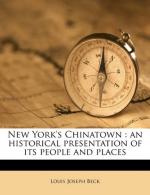|
This section contains 1,399 words (approx. 5 pages at 300 words per page) |

|
Art. The artworks of the Tang dynasty (618-907) are romantic, optimistic, and energetic. Buddhist influences led to the development of vigorous and colorful figure painting, such as the religious works in the Mogao Caves of Dunhuang in Gansu Province. Artists also created animal, flower, and landscape paintings that derived many elements from Chinese brush calligraphy. New styles and theories of calligraphy developed, and the cutting of seals became an art. Impressive Tang-era sculpture groups and stone carvings have survived at several sites. Tang porcelain, silks, and metal arts were the most advanced in the world. By the Song dynasty (960-1125) the Buddhist influence had declined. The extraordinary Song-era Buddhist paintings and sculptures in Sichan and the Mogao Caves are more secular in appearance than earlier Buddhist works. Song landscape painting became abstract, symbolic, impressionistic, and playful, and painting styles diverged. Song porcelain was created in three colors: green...
|
This section contains 1,399 words (approx. 5 pages at 300 words per page) |

|



